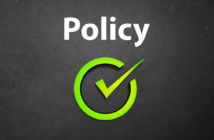Authors: Chris Arnone, CPA; Steven Murphy, CPA; and Geoff Braun, CPA

The long-awaited change to the lease accounting standard ASU 2016-02, Leases (ASC 842) is now effective for privately-held transportation companies. As the first major update to lease accounting in 40 years, implementation presents a significant challenge for many transportation companies who lease tractors, trailers, real estate and other assets. Fortunately, the implementation of the new lease standard by public companies provides an opportunity for private transportation companies to understand how to prepare and understand the challenges encountered throughout the process. Here are five lessons learned that could help private trucking companies.
- Lease contracts are everywhere. Not every contract considered a lease under ASC 842 is labeled as such. A lease is a contract that conveys the right to control the use of a specified asset (e.g., transportation equipment or forklifts) during a period of time in exchange for consideration. As such, a lease agreement can be embedded in other types of contracts, such as transportation service agreements and information technology service contracts.
Finding these embedded leases can involve considerable time and judgment, including closely examining all operations and identifying areas where embedded leases are likely to exist. A review of the activity in expense accounts (e.g., excluding lease and rental expenses) can help identify recurring expenses that could be related to embedded leases.
Lesson – Identifying a complete lease population is not just a matter of obtaining what are labeled as lease or rental agreements; it will require time, effort and judgment and involve those outside the accounting and finance teams.
- The required lease information can be challenging to obtain and extract. ASC 842 requires companies to identify information within lease agreements, including dates and lease payments. Some leases have numerous amendments, which can add complexity to finding the appropriate source document for the required information. Further, some of the required information, including discount rates, the expected term of an evergreen month-to-month lease and the probability of executing purchase or renewal options, are subject to management judgment and estimates.
Lesson – Don’t underestimate the time necessary to collect and organize lease data; it is not right there at your fingertips.
- Manual processes are less practical for maintaining source documentation, producing journal entries and preparing financial statement disclosures. ASC 842 requires significantly more information and calculations to generate journal entries and financial statement disclosures. As a result, many public companies procured software solutions or modified existing systems. The software solutions often took longer than expected to become fully operational.
Lesson – Depending on your lease volume, a manual process may not be the way to go. If you determine that a software solution is in your best interest, you should ensure that the solution has the measurement and disclosure reporting functionality your company needs and get started right away.
- Determining the incremental borrowing rate (IBR) can be complex. You may need to consider a variety of IBRs for different lease terms and types. There is an alternative for private companies; instead of an IBR, they may use a risk-free rate by asset class (e.g., real estate, tractors, trailers). However, given the current levels of risk-free rates, using such a rate could result in a significant lease liability and adversely impact debt covenant calculations.
Lesson – Don’t just assume that you can use any rate on your existing debt as the IBR. The IBR is a significant estimate in your lease calculations, and consideration needs to be given to the collateralization of the debt, term and nature of the lease and entity-specific factors that could impact the determination of your IBR.
- Be prepared for surprises. Nearly every company runs into unexpected challenges once they get into implementation, including but not limited to embedded leases, the number of leases they actually have and the consideration of month-to-month and verbal agreements.
Lesson – Don’t assume that implementation will just be a matter of inputting the lease information you already have. It can be complex and most likely take longer than expected, so there is no time to wait.
Given that the new standard is effective for private companies January 1, 2022, we encourage you to act soon. If you have any questions on implementing and maintaining compliance with ASC 842 for your company, Moore Colson can help. Contact us for more information.



